 REVIEWS
REVIEWS
 REVIEWS
REVIEWS
Forward
Having watched and enjoyed the television series "Classic Albums" I was, as usual, left thinking why wasn't (insert the name of your own personal favourite here) on it? I am sure I read somewhere that there was a programme about Moving Waves but I don't recall it being screened in the UK, so to satisfy some yearning (or more likely ego) I decided to do my own Classic Album review.
My opinion of Focus as a unit has changed over the years as I built up my collection and tried to put it all into some sort of historical perspective. Like all the very best bands the collective output of Focus at its peak was always greater than the sum of the individual parts; but I believe that from a compositional point of view the Akkerman/ Van Leer partnership was essential not only to the artistic success of Focus, but also in forming them both as musicians in preparation for their future musical activities.
Here then is my Classic Album, not as difficult a choice to make as I thought given that it was going to be by Focus or Akkerman or Van Leer, a particularly strong back catalogue I think anyone would agree.

An Appreciation - by Tom Watson
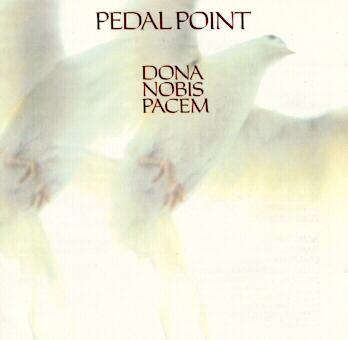 I didn't really know where to start with this, an album that I came across almost by accident at a time when I had all but given up on finding any new Focus or Focus related product. It was, by a strange coincidence, listed as "Thijs van Leer - Pedal Point (Focus)" in the catalogue of the mail order CD company that I use for all my prog rock purchases. Without hesitation I ordered two discs, the aforementioned Pedal Point and Geluckig Is Het Land neither of which I knew anything about. What follows is an appreciation of what I consider to be the best album that Focus never made which I also consider to be the highpoint of Thijs van Leers post Focus career, indeed for me this is simply one of the greatest works produced by any "progressive" artist.
I didn't really know where to start with this, an album that I came across almost by accident at a time when I had all but given up on finding any new Focus or Focus related product. It was, by a strange coincidence, listed as "Thijs van Leer - Pedal Point (Focus)" in the catalogue of the mail order CD company that I use for all my prog rock purchases. Without hesitation I ordered two discs, the aforementioned Pedal Point and Geluckig Is Het Land neither of which I knew anything about. What follows is an appreciation of what I consider to be the best album that Focus never made which I also consider to be the highpoint of Thijs van Leers post Focus career, indeed for me this is simply one of the greatest works produced by any "progressive" artist.
Geluckig was somewhat of a disappointment being as it is a collection of pastoral tunes (songs?) set to an Introspection style backing, but without the strong melodies that made that series so memorable. It was therefore with a little trepidation that I placed the second disc on my CD player and pressed start, what followed was a revelation even to one such as myself who had been brought up on the aural delights of Moving Waves and Focus III. In the unlikely event that any reader does not know the background to this recording, it is Thijs van Leers setting of the traditional Catholic mass sung in the original Latin; which in itself was more than a little intriguing having been brought up in a Catholic household back in the days when the Latin Mass was Mass. The music follows the Order of Mass that has inspired the great composers of the last millennium namely Kyrie, Gloria, Credo, Sanctus, Agnus Dei (the album lists only three "tracks" Kyrie, Credo, Sanctus, the Agnus Dei being included with the Sanctus and the Gloria for some reason tagged on to the end of the Kyrie). That any rock musician at the tale end of the 20th century would wish to compose a rock "Mass" might strike some as a bit odd, bizarre even, but in an interview in Sounds magazine in 1976 there was perhaps a hint of things to follow as Van Leer describes his original conception of Focus. When asked what he thought the future held for Focus he backtracked a little saying, "When Focus began I wanted to create a timeless feeling by adding Gregorian and Medieval atmospheres to electric rock, leaving un-arranged space for Jan to really blow. "I think our best record was 'Moving Waves'. That was honest about our longing for mysticism. It was our most courageous, and our most European. He continued, "Jan and I always agreed that our ideal composers were Bach and Bartok. Bach always has that radiance, knowing it was the music of the truth of Jesus Christ...Rock could still be the language of our day in that way." Six years later Dona Nobis Pacem was released.
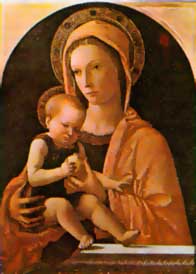 The first thing that strikes the listener, apart from the superb production, is how little improvisation there is on this record. Indeed it is beautifully arranged throughout in contrast to the Focus style where a song could go off in its own direction(s) and return (almost miraculously some might say) half an hour or so later to where it all started. There are only a few passages in the entire recording where there is any space for improvising and even these are kept short and to the point. There is scarcely a note wasted on this album, it's almost as if every note has a point to it, which in the traditional sense of a Mass would certainly be the case, composers having to work within very strict doctrinal limitations when composing for the church. One wonders what the medieval church fathers would have made of the opening Kyrie, with the occasional "blue note" creeping into the chant; burned as a heretic I would have presumed!
The first thing that strikes the listener, apart from the superb production, is how little improvisation there is on this record. Indeed it is beautifully arranged throughout in contrast to the Focus style where a song could go off in its own direction(s) and return (almost miraculously some might say) half an hour or so later to where it all started. There are only a few passages in the entire recording where there is any space for improvising and even these are kept short and to the point. There is scarcely a note wasted on this album, it's almost as if every note has a point to it, which in the traditional sense of a Mass would certainly be the case, composers having to work within very strict doctrinal limitations when composing for the church. One wonders what the medieval church fathers would have made of the opening Kyrie, with the occasional "blue note" creeping into the chant; burned as a heretic I would have presumed!
It is apparent right from the opening few bars of the Kyrie that the temptation to lift a Gregorian Chant from one of the great medieval or renaissance composers has been resisted, this was something that set Focus apart from other "classically" inclined bands of the time. Focus always composed in the style of the classical and early composers with the occasional reference to a composition within their own framework, much the same way as a jazz player quotes from other players or songs in their particular idiom. Interviewed in Wondrous Stories magazine in 1997, Thijs Van Leer describes his composition as, "Classic yes, let's say that we didn't produce nor mentioned the classic masters of the past centuries, as some groups made. "I composed in the style of FOCUS 1,2 and 3 that was classic and its roots is inside of the European continental tradition."
The Kyrie is divided into three parts, each building on the previous. The introductory Kyrie Eleison builds from simple voice and strings and moves into a more familiar Van Leer keyboard/ voice theme for the second Christe Eleison. This second theme is littered with those trademark extended piano chords which are very much a part of the distinct Van Leer compositional style. The final segment restates the Kyrie Eleison but this time after a short overture the speakers are filled with crashing guitar chords from Paul Shigihara and the whole piece takes off in grand fashion.
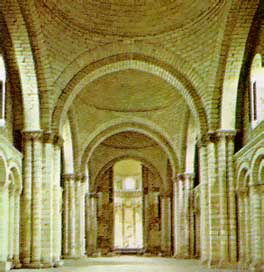 This leads the listener into track 4 which is the aptly titled Gloria. The first 1 minute 15 seconds of which is a familiar sounding Van Leer theme although I can't quite place it. The sound of the band singing the line Gloria In Excelsis Deo is positively joyful, there is no pretence here, these guys sound rapturous. As the piece develops a familiar theme to some readers develops; the middle section of this track was developed from Eastern Sky, an outtake from the Focus Con Proby sessions, indeed it is very faithful to the "original" version. The track cleverly picks up in tempo to finish with another rousing chorus of Gloria. Bass player Tato Gomez plays some particularly fine bass throughout, but I would single out this piece and some parts of the Credo (check out the funk section 3 minutes into track 6 for example) as amongst the best on this recording.
This leads the listener into track 4 which is the aptly titled Gloria. The first 1 minute 15 seconds of which is a familiar sounding Van Leer theme although I can't quite place it. The sound of the band singing the line Gloria In Excelsis Deo is positively joyful, there is no pretence here, these guys sound rapturous. As the piece develops a familiar theme to some readers develops; the middle section of this track was developed from Eastern Sky, an outtake from the Focus Con Proby sessions, indeed it is very faithful to the "original" version. The track cleverly picks up in tempo to finish with another rousing chorus of Gloria. Bass player Tato Gomez plays some particularly fine bass throughout, but I would single out this piece and some parts of the Credo (check out the funk section 3 minutes into track 6 for example) as amongst the best on this recording.
The Credo, which comprises the next 8 tracks on the album, is introduced with a short (by Focus standards) instrumental interlude which features some fine guitar work from Paul Shigihara. A much more controlled player than Jan Akkerman, Shigihara exhibits a fine balance of delicate playing on the quieter passages of this first piece with some dextrous electric arpeggios as the piece builds up. Track 7, Credo Et In Unum is the one time when the band rock out, starting out with crashing guitar chords and imaginative use of the Vocoder, before breaking into the bouncy Et Incarnatus Est. Van Leer makes extensive use of the Vocoder throughout this recording and is one of the very few people I can think of who have used it imaginatively, indeed musically!
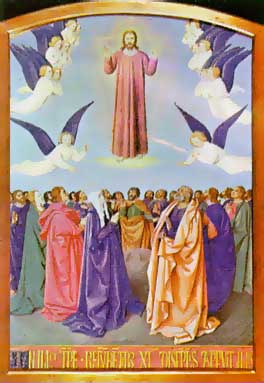 Tracks 8 and 9 bring the mood right down with track 8 Crucifixus Etiam evoking images of Christ crucified, particularly evocative are the sinister drum rolls that conclude this short track. Track 9 Et Resurrexit again features Paul Shigihara, this time on the nylon string guitar, but also to be commented on is the beautiful arrangement of the piece, guitars, bass, drums, flutes, Vocoder, vocals all blending together superbly. Track 10 is in fact an uptempo reprise of Et Resurrexit and is powered brilliantly by Mario Argandona who sounds completely at ease whatever weird time signature Thijs gives him.
Tracks 8 and 9 bring the mood right down with track 8 Crucifixus Etiam evoking images of Christ crucified, particularly evocative are the sinister drum rolls that conclude this short track. Track 9 Et Resurrexit again features Paul Shigihara, this time on the nylon string guitar, but also to be commented on is the beautiful arrangement of the piece, guitars, bass, drums, flutes, Vocoder, vocals all blending together superbly. Track 10 is in fact an uptempo reprise of Et Resurrexit and is powered brilliantly by Mario Argandona who sounds completely at ease whatever weird time signature Thijs gives him.
The final two parts of the Credo adopt a more serious tone which is exactly in keeping with the text they are set to. Et In Spiritum Sanctum after a short instrumental introduction breaks into a classic Van Leer melody/ chord structure which complements the ancient text perfectly. The track finishes on an ambiguous chord that floats around no particular key centre, building an atmosphere of anticipation for the final part of the Credo, also one of the absolute key moments in the Mass, the Confiteor. This short Confiteor is like an affirmation of all that has gone before and is fundamental to Catholic doctrine. Another beautiful instrumental introduction, giving prominence to Thijs' flute playing, finishes on six piano notes that count in the vocal "Confiteor unum baptisma in remissionem peccatorum", then all ...well not hell, all heaven breaks loose. On the "chorus", namely the word Confiteor, the band strike up a glorious noise the like of which I have never encountered before, perhaps the inspired underpinning of the track with Moog bass pedals that were so effective on Focus' "Red Sky At Night" has a large part to play in this. After a reprise of the introduction the six piano notes are omitted and what follows is spectacular, the reprised chorus is majestic. This is one of the most inspired and emotionally moving five minutes of recorded music I have heard, ever and worth the purchase price alone.
So how to follow a five minute tour de force? Simple, revive a classic Focus melody, in this case the Fugue, from Carnival Fugue on Focus III is the basis for the first part of the two part Sanctus. I believe this arrangement to be far superior to that which appeared on Focus III mainly due to the absence of the Carnival section which, to me, always felt like it was "tagged on" to the end of the Fugue rather than an integral part of the composition. The five minute Fugue on Pedal Point is exceptionally well arranged, particularly the vocals which are superb; indeed unlike Focus albums where, by Thijs Van Leers own admission, the vocals were not the high points of the recordings, on the Pedal Point recording the vocals are excellent throughout (and no yodelling either!). Again Paul Shigihara is excellent, although one does sometimes wish he had some space to really blow if I may paraphrase Thijs Van Leer.
The second part of the Sanctus, Osanna In Excelsis, is another stunning vocal arrangement, this as close as we will ever get to hearing a true "rock choir", no mellotrons or studio trickery, just brilliant singing and arranging.
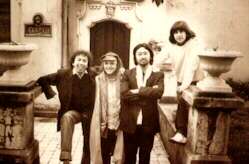 The final part of the Mass, although not of this recording, is the Agnus Dei. Again this is a vocal arrangement par excellence, which again features an inspired Van Leer melody. The vocal build up through the phrase Dona Nobis Pacem and culminating in a blast of keyboards and bass pedals again is quite electrifying. Maybe I am carrying a bit too much "emotional baggage" to begin with but this entire work is littered with moments that I find highly emotionally charged, at times to the point where it is totally overpowering. Maybe I need a holiday...
The final part of the Mass, although not of this recording, is the Agnus Dei. Again this is a vocal arrangement par excellence, which again features an inspired Van Leer melody. The vocal build up through the phrase Dona Nobis Pacem and culminating in a blast of keyboards and bass pedals again is quite electrifying. Maybe I am carrying a bit too much "emotional baggage" to begin with but this entire work is littered with moments that I find highly emotionally charged, at times to the point where it is totally overpowering. Maybe I need a holiday...
The album closes with a Pater Noster, not traditionally part of the classic Mass format, but this vocal and keyboard piece is exquisitely crafted and closes the album on a tranquil note, quite fitting perhaps when one considers what has gone before.
That then is my Classic Album. If you own Dona Nobis Pacem already go and give yourself a treat and put it on, if you don't own it then do yourself a big favour and try and get hold of a copy. This is an album you need to live with for some time before you truly begin to appreciate how good it really is. I've had my copy now for seven or eight years and to this day I still find something new, some little nuance in the production that I didn't notice before; little aural surprises that delight the listener, make you smile and think "Maybe I'll just play that bit again..."
Tom Watson 26th June 00
All text kindly sent by Tom Watson
Go to the Pedal Point album
Go to the Tom Watson's "The Swing Guitars Homepage"
Pedal Point cover picture and band photo sent by Tim Baugh
